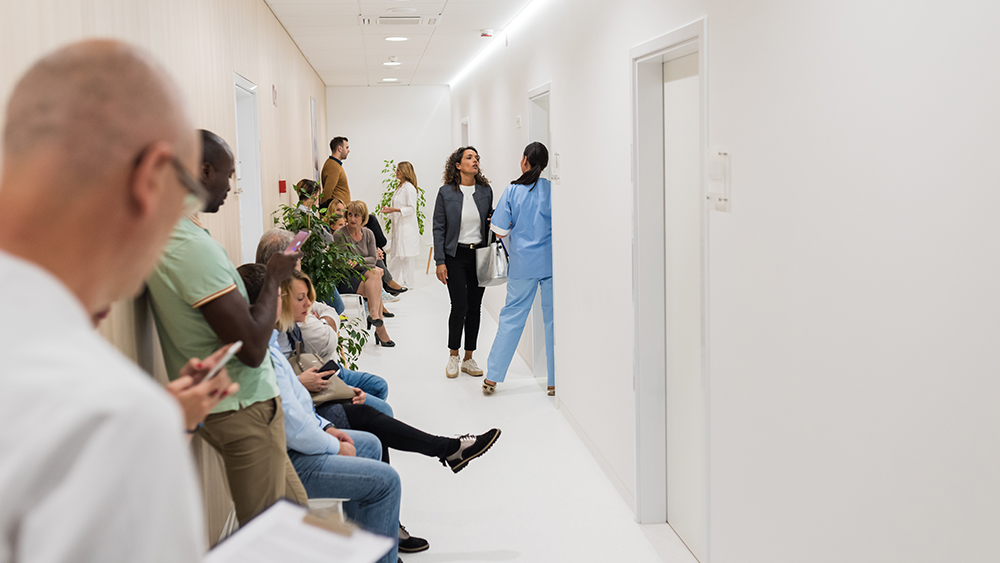
Three countries, five time zones and a range of technical and business backgrounds. Jessica Zamarripa, a graduate student in the Department of Materials Science and Engineering at Texas A&M University, and a team of international researchers are creating a novel wearable patch to help medical professionals remotely monitor patients’ vitals and reduce hospital overcrowding during and after COVID-19.
Zamarripa, a National Academy of Engineering (NAE) Grand Challenge Scholar, said the team, Postlytics, came together during the 2019 Global Grand Challenges Summit’s (GGCS’19) Innovation Hackathon Co-Lab that challenged groups to create a business model to address two global questions: “Can we sustain 10 billion people by 2050?” and “Will artificial intelligence and other transformational technologies change humanity for the better?”
Postlytics included Emily Cho from the University of Maryland, Luke He from the University of Nottingham Ningbo China, Asit Rahman from the University of Glasgow and the Royal Air Force, Morella Wang from Fuzhou University and Zamarripa.
Inspired by both theirs and others’ experiences regarding the difficulty of having access to adequate hospital resources, Postlytics aims to reduce overcrowding in hospitals by enhancing the ability for clinicians to monitor patients from afar. This would allow for those with less severe conditions to heal from home, while still being remotely surveyed by medical staff.
“While hospital overcrowding is already a big issue across the globe, the issue will only increase as the global population is expected to rise to 10 billion people by 2050,” said Zamarripa. “Before the COVID-19 pandemic, we certainly did consider the potential use of our idea to help infectious diseases. With the onset of the pandemic the team decided to primarily focus on pivoting to help the COVID-19 situation.”
As Zamarripa explained, health care and other data resources such as the Organisation for Economic Cooperation and Development estimate there are as few as three hospital beds per 1,000 people available in the United States. The COVID-19 pandemic puts this shortage to the test, as hospitalization rates rise and lead to excess patients being boarded in emergency rooms. Such overcrowding causes inefficient patient care and a decreased ability for doctors to give patients proper attention and care.
The team’s solution to this issue is a wearable patch that monitors patient vitals, such as temperature, cough detection, heart rate and electrocardiogram (ECG). This information is transmitted in real time to health care professionals who can monitor the patient from afar, thus allowing for those in recovery or early stages of COVID-19 to be sent home.
The team’s new wearable design will use leading-edge materials for reusability and flexibility purposes. The system will utilize data analytics and machine-learning algorithms to inform both health care professionals and patients.
In addition to the team being selected as one of the four winning teams of the Innovation Hackathon Co-Lab, they were chosen to speak at the second NAE Covid-19 Call for Engineering Action: Concept Pitch Event. The team has also been selected to participate in the joint Royal Academy of Engineering-Women in Engineering virtual incubator and the National Science Foundation’s I-Corps training in Los Angeles. They are currently in the selection process for opportunities such as the Creative Destruction Lab and National Institutes of Health Rad-X programs.
“I believe I can speak for the entire team when I say it is extremely humbling and motivating when the team gets recognized for our efforts,” said Zamarripa. “We each have a passion for wanting to make a difference in society. The recognition that the team has received thus far has fueled our passions for furthering the development of our project.”
Now, with the Grand Challenges competition a year behind them, Zamarripa said the team continues to innovate. With plans to build and test a fabricated prototype, apply for patents and the NSF National I-Corps Program (Innovation Start-up Incubator) and begin the U.S. Food and Drug Administration approval process, Postlytics is not going to be slowing down any time soon.
“In the long term, we see many benefits and applications for enhancing remote monitoring capabilities on a hopefully global scale,” she said. “With the COVID-19 pandemic, our primary focus is on using our solution to benefit hospitals and the overall health care industry; but we do see a wide range of applications to improve working and living situations in this social-distancing time.”
Postlytics would like to acknowledge their mentor, Dr. Kayleen Helms ’00 with Intel Corporation, who serves on the external advisory boards for Texas A&M’s material science and engineering and aerospace engineering departments, for her support and guidance. Postlytics would also like to acknowledge student workers Aysheh Abushanab, Justis Morales, Emma Ong and Ruth Ann Sonom from Texas A&M; Nicholas Bruns from Marquette University; Chenhao “Martin” Shi from University of Nottingham at Ningbo; and Robert Luttrell from California Polytechnic State University for their critical work toward this effort.